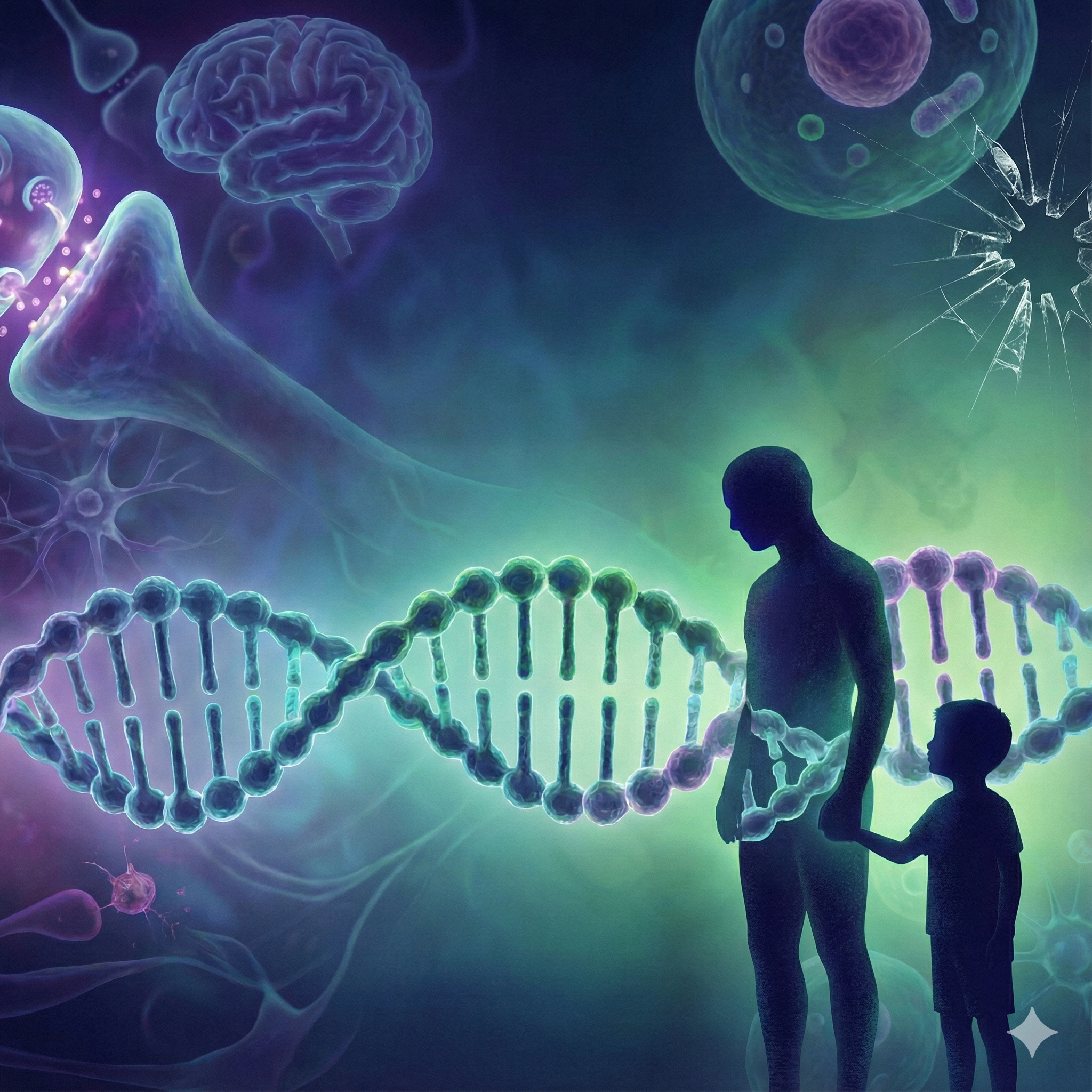Analysis of domestic violence in the TV series 'Ángela and the VioGén Protocol
By Massimo Lattanzi¹²³, Tiziana Calzone¹²³
¹Italian Association of Psychology and Criminology (AIPC), Rome, Italy ²Italian Centre for Relational Psychotraumatology (CIPR), Pescara-Rome, Italy ³National Observatory on Family Homicides (ONOF), Rome, Italy
Abstract
This article presents an analysis of the Spanish television miniseries Ángela (2024) as a clinical case study for applying the constructs of relational psychotraumatology, according to the paradigm developed by the Italian Association of Psychology and Criminology (AIPC) and the Italian Centre for Relational Psychotraumatology (CIPR). Through an examination of the dynamics between the protagonists, Ángela and Gonzalo, the theoretical models of the "Traumatic Bubble" and the "Partner Paradox" (Lattanzi & Calzone, 2021, 2023) are illustrated, interpreting domestic violence not as a mere behavioral act, but as a symptom of profound emotional dysregulation rooted in complex relational trauma (C-PTSD). The analysis extends to the psychotraumatological profile of the perpetrator and the victim's journey, highlighting the mechanisms of coercive control, gaslighting, and secondary victimization. Finally, the proposed clinical-diagnostic model is compared with the systemic-actuarial approach of the Spanish VioGén protocol, discussing its predictive limitations in light of the complexity of traumatic dynamics. The article concludes by advocating for the need to integrate algorithmic risk assessment with a qualitative, trauma-informed understanding for the effective prevention of gender-based violence.
Section 1: The grammar of a wound – framing domestic violence through relational psychotraumatology
1.1. Introduction to the AIPC/CIPR Paradigm
The analysis of domestic violence, when conducted through the lens of relational psychotraumatology, transcends merely behavioral or sociological definitions to arrive at a neurobiological and systemic understanding of the phenomenon (Lattanzi & Calzone, 2023). In this perspective, violence is not primarily an act of malice or a cultural product, but the manifest symptom of a deep relational wound rooted in the past of the individuals involved.
The central construct for this understanding is Complex Post-Traumatic Stress Disorder (C-PTSD), which originates from chronic and repeated adverse experiences within early attachment relationships (Herman, 1992). Unlike classic PTSD, which is linked to a single traumatic event, C-PTSD shapes the very structure of the developing nervous system. A brain that forms in an environment perceived as chronically threatening or unpredictable becomes fixed in a permanent defensive mode, losing the fundamental ability to self-regulate its emotions and to clearly discern between safety and danger. This state is not a temporary alteration but a stable neurobiological condition defined as chronic emotional dysregulation (Calzone & Lattanzi, 2023).
Emotional dysregulation is the engine that fuels dysfunctional dynamics. It manifests as an inability to manage internal states, leading to extreme reactions that can oscillate between hyper-arousal (anger, anxiety, panic) and hypo-arousal (emotional detachment, dissociation, a sense of emptiness). In this framework, the aggressor's violent behavior cannot be interpreted as a simple quest for power, but as a pathological and desperate strategy to attempt to regulate their own inner chaos (Lattanzi & Calzone, 2025). The abuser, unable to manage their own dysregulation, projects the need for control outward, turning the partner into an external object whose submission becomes the only perceived tool to soothe their internal anguish. This shifts the analysis from a moral plane to a clinical one, identifying violence as the symptom of a condition rooted in the neurobiology of trauma.
1.2. The Models of Lattanzi and Calzone: the trigger mechanism and the breeding ground
Within the paradigm of relational psychotraumatology, the models developed by Lattanzi and Calzone offer precise conceptual tools to decode how childhood wounds are reactivated and perpetuated in adult relationships. Two concepts, in particular, are fundamental: the Partner Paradox and the Traumatic Bubble (Lattanzi, 2021).
The Partner Paradox is the reenactment in adulthood of the "Caregiver Paradox" identified by Giovanni Liotti as the core of disorganized attachment (Liotti, 1992; Liotti & Farina, 2011). In childhood, the child finds themselves in an irresolvable situation when the attachment figure, who should be a source of safety, is simultaneously a source of fear. The child is biologically driven to seek proximity to the caregiver for protection, but at the same time is driven to flee from that same figure because they perceive them as a threat. This paradoxical dynamic generates a confused and fragmented internal working model. In adulthood, this pattern is reactivated in the choice of a partner. The individual, guided by a "repetition compulsion," does not select a healthy partner, but someone who "colludes" with their own traumatic script, a person perceived simultaneously as a potential savior and a possible tormentor (Lattanzi, 2021).
When two individuals, chosen according to the logic of the partner paradox, form a relationship, they create a closed, isolated, and self-referential system: the Traumatic Bubble. This relational system is not a simple metaphor but a homeostatic breeding ground with a dual and contradictory function (Lattanzi & Calzone, 2023):
· Protective Function (Apparent): The bubble offers a sense of familiarity, understanding, and pseudo-security. Both partners, on an implicit and pre-verbal level, recognize each other's wounds, creating a symbiotic bond perceived as a refuge from the outside world.
· Pathogenic Function (Real): The bubble functions as a trauma "echo chamber." It isolates the couple from healthy external influences, prevents the learning of new relational patterns, and constantly amplifies the dysfunctional dynamics of the past (fear of abandonment, distrust, emotional dysregulation).
The Traumatic Bubble, as a homeostatic system, resists any attempt at change. Any action by one partner to gain autonomy is perceived by the system as an existential threat. The escalation of violence by the abuser, in this perspective, can be read as a "system correction" mechanism: a desperate attempt to bring the partner back within the confines of the bubble and re-establish its dysfunctional equilibrium.
Section 2: Anatomy of a traumatic bond – the relationship between Ángela and Gonzalo
The Spanish miniseries Ángela offers a clinically accurate portrayal of the dynamics described, making it an ideal case study for applying the models of relational psychotraumatology.
2.1. The construction of the bubble: the façade of perfection and pathogenic isolation
The narrative opens by showing the seemingly idyllic life of Ángela (Verónica Sánchez): a successful husband, Gonzalo (Daniel Grao), two daughters, and a luxurious home. This façade of perfection is the external manifestation of the Protective Function of the Traumatic Bubble, which masks the internal dysfunction and provides the couple with a successful social identity. However, behind closed doors, a nightmare of abuse and manipulation unfolds. The scenes of violence and Ángela's progressive isolation represent the Pathogenic Function of the bubble. Gonzalo's actions are constantly aimed at strengthening the bubble's impermeable membrane, a necessary act to keep alive the pathogenic environment where his dysregulation can find pseudo-regulation through dominance over the other.
2.2. The partner paradox on screen: Gonzalo as savior and tormentor
The relationship between Ángela and Gonzalo is an exemplary dramatization of the Partner Paradox (Lattanzi, 2021). Gonzalo, with his status and charm, embodies the "savior" pole, but his violent and manipulative nature reveals him as the "tormentor." Ángela lives trapped in this duality. The script externalizes this paradox through the character of Edu (Jaime Zatarain), a supposed private investigator who offers to help her. It is later revealed that Edu was hired by Gonzalo himself to stage a machination aimed at making her appear unstable. In this way, the paradox ceases to be just an internal conflict and becomes a real event: the one who presents himself as a savior is an agent of the tormentor. This scheme represents a direct attack on Ángela's capacity for mentalization, systematically demolishing her trust in her own perceptions (gaslighting) and positioning Gonzalo as the sole arbiter of reality, thus trapping her inside the Traumatic Bubble.
Section 3: Profile of the aggressor – Gonzalo and the role of the "dependent partner"
3.1. Beyond the Monster: Gonzalo as a "Traumatized Brain"
A psychotraumatological analysis of Gonzalo's character requires moving beyond moralistic labels to access a clinical understanding. According to the AIPC model, Gonzalo embodies the role of the "Dependent Partner" (Lattanzi & Calzone, 2023). His obsessive need for control is not an indicator of strength, but a symptom of a profound internal fragility and a chronic inability to regulate his own emotional states. Gonzalo is, in his essence, a "traumatized brain." He uses Ángela as an "external tool" to contain his own anguish and quell a primordial fear of abandonment. His identity depends on maintaining control over her, and violence becomes his only, primitive strategy for self-regulation.
3.2. Tactics for maintaining the bubble: gaslighting and violence as regulation
All of Gonzalo's actions are aimed at preserving the integrity of the Traumatic Bubble. Gaslighting, orchestrated through Edu, is his most sophisticated tactic, implemented when he perceives that Ángela is beginning to slip from his control. The goal is to annihilate her credibility, redefining her as "crazy and unstable." Physical violence is the cruder method of regulation. The final assault, which occurs in a public place and leads to his arrest, is clinically significant. Ángela's plan to film him live destroys the bubble's prerequisite of privacy. Gonzalo's explosive rage in that moment represents the "extinction burst" of a traumatized system that is losing its only regulatory object, making his internal dysregulation public and undeniable.
Section 4: The victim's journey – Ángela between trauma, dissociation, and resistance
4.1. Symptomatology of C-PTSD: Confusion, Doubt, and Fear
Ángela's psychological state is a faithful depiction of the symptomatology of C-PTSD. Her constant confusion, inability to trust her own judgment, and struggle to discern reality from manipulation are cardinal symptoms. Her initial apparent passivity is not weakness, but a survival response (hypo-arousal, dissociation) of a nervous system in a state of chronic alert.
4.2. The Rupture of the Bubble: The Role of Esther as an Agent of Healthy Co-regulation
Her friend and lawyer, Esther (Lucía Jiménez), is the external force that causes the bubble to rupture. Within the AIPC paradigm, Esther acts as an agent of healthy co-regulation. While Gonzalo offers pathological regulation based on control, Esther provides validation, support, and an anchor to reality, representing the secure attachment bond necessary to begin a path to healing.
4.3. Secondary Victimization: The Failure of the System
The narrative arc in which Ángela is disbelieved, loses custody of her daughters, and is institutionalized is a representation of secondary victimization. Gonzalo's gaslighting strategy succeeds because it exploits systemic biases against women who appear "unstable." The institutional system, lacking a trauma-informed lens, ends up validating the abuser's narrative, interpreting Ángela's normal reactions to trauma as signs of her own intrinsic pathology.
Section 5: From fiction to reality – The VioGén System and the limits of algorithmic prevention
5.1. Operational Description of the VioGén Protocol
The "Sistema de Seguimiento Integral en los casos de Violencia de Género" (VioGén), operational in Spain since 2007, is a national platform that integrates information from various institutions to estimate the risk of violent recidivism. The heart of the system is a risk assessment protocol (VPR - Valoración Policial del Riesgo) based on an actuarial approach, which uses a questionnaire of indicators to calculate a risk score (López-Ossorio et al., 2019).
5.2. Critical analysis: predictive efficacy and documented failures
Despite its strengths, the predictive efficacy of VioGén is a subject of debate. Several analyses have shown low prediction rates for intimate partner homicides (IPH) (González-Álvarez et al., 2020). A New York Times investigation revealed that in 98 homicide cases, 55 victims had been assessed by the system with a "low" or "negligible" risk level (Satariano & Toll Pifarré, 2024).
5.3. The gap between algorithmic risk and relational trauma
The critical weakness of the VioGén system lies in its inability to measure the non-quantifiable dynamics of a Traumatic Bubble. An algorithm is effective at measuring what has happened, but it is blind to the why and how of a relational dynamic. It may classify a case as "low risk" in the absence of recent physical violence, while ignoring the escalation of coercive control, which from a relational psychotraumatology perspective is a grave warning sign. That "unfathomable shadow zone" that every algorithm possesses is, in fact, precisely the relational trauma that the models of Lattanzi and Calzone are designed to understand.
Section 6: Conclusive summary – the mirror of the narrative and clinical implications
6.1. Ángela as a didactic tool
The series Ángela proves to be an educational tool of exceptional value. It transcends entertainment to become an accurate dramatization of the constructs of the Traumatic Bubble and the Partner Paradox, illustrating the mechanisms underlying violence. For these reasons, it can be considered a valuable case study for the training of clinicians and operators in the justice system.
6.2. recommendations: integrating the Understanding of Trauma into Risk Protocols
The comparative analysis leads to an inescapable conclusion: quantitative and actuarial tools are insufficient if not integrated with a qualitative, trauma-informed understanding. True prevention cannot rely solely on an algorithm. It is necessary for risk assessment protocols to be enriched with specific training for operators, based on models like those proposed by AIPC/CIPR, to recognize the signs of a Traumatic Bubble and understand that the moment a report is filed is often the moment of most extreme danger. Only by integrating the quantitative measurement of risk with the qualitative understanding of the wound will it be possible to build a truly effective protection system.
Bibliography
· Calzone, T., & Lattanzi, M. (2023). Il Trauma Relazionale Complesso: Dalla disregolazione emotiva all'atto criminale. AIPC Editore.
· González-Álvarez, J. L., López-Ossorio, J. J., & Andrés-Pueyo, A. (2020). Intimate Partner Homicide Risk Assessment by Spanish Police. Psicothema, 32(1), 65-72.
· Herman, J. L. (1992). Trauma and Recovery: The Aftermath of Violence—from Domestic Abuse to Political Terror. Basic Books.
· Lattanzi, M. (2021). Il paradosso del partner. Dalla scelta del partner alla bolla traumatica. AIPC Editore.
· Lattanzi, M., & Calzone, T. (Eds.). (2023). Manuale di Psicotraumatologia Relazionale. AIPC Editore.
· Lattanzi, M., & Calzone, T. (2025). La narrazione della disregolazione: dal trauma relazionale alla violenza. Associazione Italiana di Psicologia e Criminologia. Retrieved from www.associazioneitalianadipsicologiaecriminologia.it
· Liotti, G. (1992). Disorganized/disoriented attachment in the etiology of the dissociative disorders. Dissociation, 5(4), 196-204.
· Liotti, G., & Farina, B. (2011). Sviluppi Traumatici. Eziopatogenesi, clinica e terapia della dimensione dissociativa. Raffaello Cortina Editore.
· López-Ossorio, J. J., González-Álvarez, J. L., Muñoz Vicente, J. M., Urruela Cortés, C., & Andrés-Pueyo, A. (2019). Validation and calibration of the Spanish police intimate partner violence risk assessment system (VioGén). Journal of Police and Criminal Psychology, 34(4), 439-449.
· Satariano, A., & Toll Pifarré, G. (2024, February 10). A Tool to Protect Women From Domestic Violence Is Fatally Flawed. The New York Times.


.-omicidi-familiari-100-maschili-e-meridionali.-legemonia-della-violenza-intergenerazionale-uomo-su-uomo-nel-sud-italia.jpeg)
